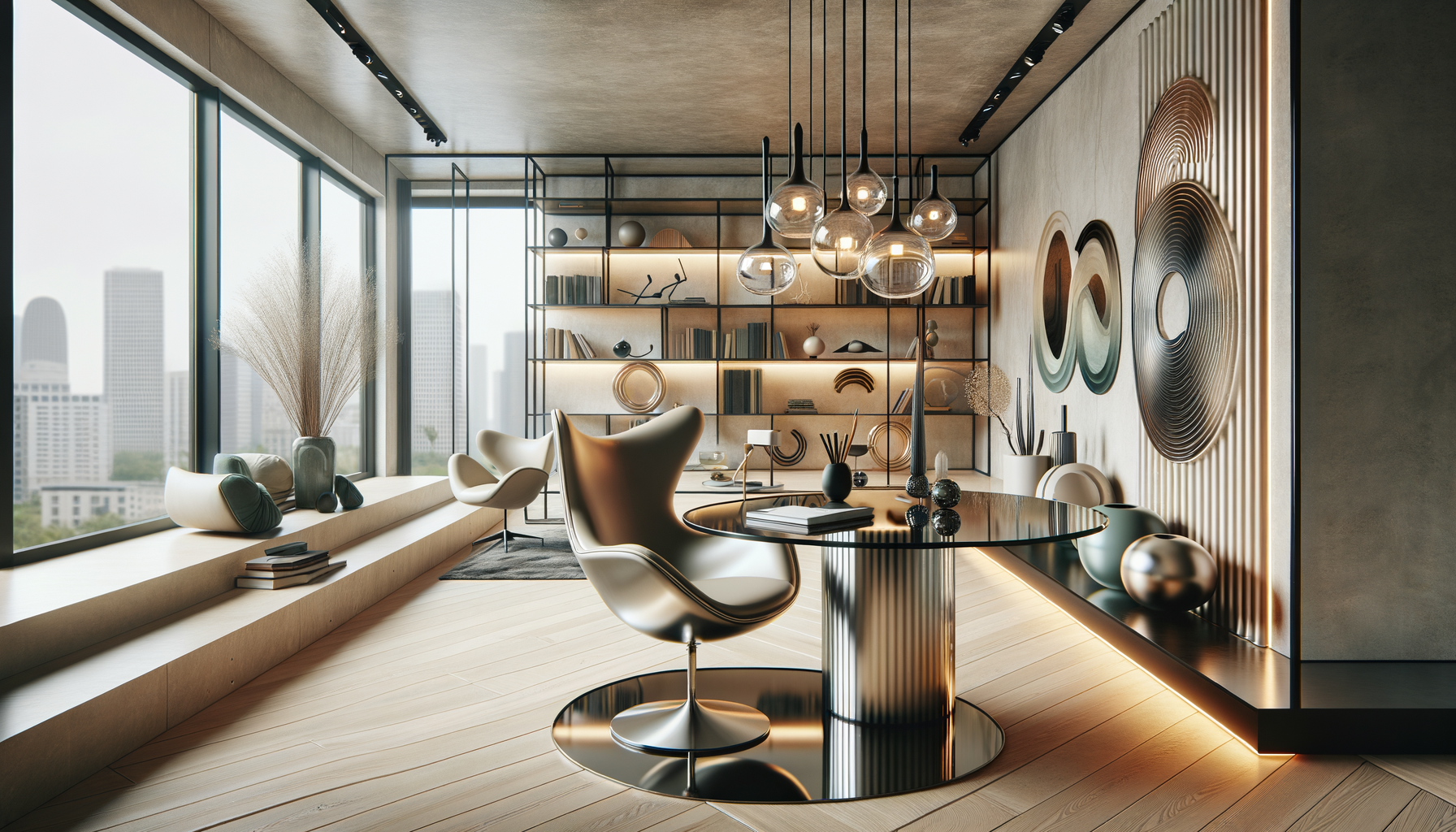Innovate Your Interior
Exploring the world of home furniture reveals how it shapes our living spaces and enhances our everyday lives.

The Role of Furniture in Home Design
Furniture is more than just functional; it is a pivotal element in home design. It serves as the backbone of our living spaces, setting the tone and style of our homes. The right pieces can transform a bland room into a cozy haven or a modern masterpiece. Furniture plays a crucial role in defining the use of space and influencing how we interact within it.
Consider the living room, often the heart of the home. A well-chosen sofa can invite relaxation and conversation, while a thoughtfully placed coffee table can serve as a focal point for gatherings. Similarly, in the dining room, a robust dining table not only facilitates meals but also family discussions and celebrations.
Furniture also contributes to the aesthetic appeal of a home. It reflects personal taste and can be a means of self-expression. With a plethora of styles ranging from minimalist to eclectic, furniture allows homeowners to craft a unique environment that resonates with their personality. This personalization of space is integral to creating a sense of belonging and comfort.
Moreover, furniture affects the functionality of a home. It optimizes space usage, providing storage solutions and enhancing convenience. For instance, modular furniture can adapt to changing needs, making it a versatile choice for modern living. In essence, furniture is not just about filling a space but about enhancing the quality of life within that space.
Materials and Sustainability in Furniture Design
The materials used in furniture manufacturing have a significant impact on both the environment and the quality of the furniture. As consumers become more environmentally conscious, the demand for sustainable furniture has risen. This shift has led to innovative uses of materials that are both eco-friendly and durable.
Wood remains a popular choice due to its natural beauty and strength. However, the focus has shifted towards responsibly sourced wood, such as those certified by sustainable forestry programs. Bamboo is another sustainable option, known for its rapid growth and versatility.
Recycled materials are gaining traction in the furniture industry. Manufacturers are increasingly using recycled metal, plastic, and even fabric to create pieces that are not only stylish but also environmentally responsible. This approach not only reduces waste but also conserves resources.
In addition to material selection, the production process is also under scrutiny. Companies are adopting practices that minimize carbon footprints, such as using water-based adhesives and finishes that emit fewer volatile organic compounds (VOCs). By choosing furniture made with sustainable materials and processes, consumers can contribute to a healthier planet while still enjoying high-quality products.
Trends in Modern Home Furniture
The world of home furniture is ever-evolving, with trends that reflect changes in lifestyle, technology, and design philosophy. One notable trend is the rise of multifunctional furniture. As living spaces become more compact, especially in urban areas, the need for furniture that serves multiple purposes is growing. Think of a sofa that transforms into a bed or a dining table that doubles as a workspace.
Minimalism continues to influence modern furniture design. Clean lines, neutral colors, and uncluttered spaces are favored for their calming effect and aesthetic appeal. This trend emphasizes quality over quantity, encouraging homeowners to invest in fewer, but more meaningful pieces.
Technology integration is another exciting trend. Smart furniture, equipped with features such as wireless charging and built-in speakers, is becoming increasingly popular. This blend of technology and design caters to the tech-savvy consumer looking for convenience and innovation.
Finally, there is a growing appreciation for artisanal and handcrafted furniture. These pieces offer a unique charm and craftsmanship that mass-produced items often lack. They bring a personal touch to home interiors, celebrating the skill and creativity of artisans.
Choosing the Right Furniture for Your Space
Selecting the right furniture involves more than just aesthetics; it requires careful consideration of space, functionality, and lifestyle. Here are some key factors to consider when choosing furniture for your home:
- Space Measurements: Always measure your space before purchasing furniture. This ensures that the pieces will fit comfortably and that the room will not feel overcrowded.
- Functionality: Consider how the furniture will be used. For instance, if you frequently host guests, a durable and expandable dining table might be ideal.
- Style and Cohesion: Choose furniture that complements your existing decor. Consistency in style and color palette helps create a harmonious look.
- Quality and Durability: Invest in pieces that are well-made and durable. Quality furniture may come with a higher price tag, but it often offers better longevity and value.
By considering these factors, you can make informed decisions that enhance both the functionality and beauty of your home.
Maintaining Your Home Furniture
Proper maintenance of home furniture is essential to preserve its appearance and extend its lifespan. Different materials require different care techniques, and understanding these can help keep your furniture looking its best.
Wooden furniture, for example, benefits from regular dusting and occasional polishing. Avoid placing it in direct sunlight to prevent fading, and use coasters to protect surfaces from moisture damage. Upholstered furniture requires vacuuming to remove dust and debris, and prompt attention to spills to prevent stains.
Leather furniture should be cleaned with a damp cloth and conditioned periodically to maintain its suppleness. For metal pieces, a simple wipe down with a damp cloth can prevent rust and maintain shine.
In addition to cleaning, consider the placement of your furniture. Avoid placing heavy items on top of delicate pieces, and ensure that furniture is not exposed to extreme temperatures or humidity, which can cause warping or cracking.
By following these maintenance tips, you can ensure that your furniture remains a cherished part of your home for years to come.